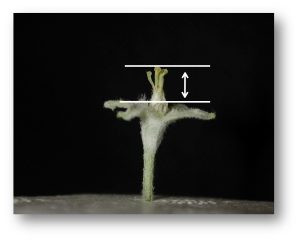Bloom Thinning Recommendation for Apple Orchards
This article is a summary of the Bloom Thinning Webinar which can find here
The 2022 growing season is right around the corner, and in 2 to 3 weeks we will probably be at bloom in the southern part of the state. Bloom is always a stressful time during our growing season as we face the uncertainty of spring frosts and their consequences on thinning strategies. The relative high frequency of spring frost events in the last couple of years has, in my opinion, discouraged growers from adopting bloom thinning as an additional thinning window. However, there are multiple benefits to thinning earlier: reduced biennial bearing by ensuring a greater return bloom, larger fruit size, and it’s the best thinning option for organic growers. Growers that struggle with return bloom, which has been an issue in the last 2 seasons in WI, should specially consider including bloom thinning in their crop load management practices. In addition, the development of the pollen tube model has reduced the uncertainty of bloom thinning significantly.

If you want to learn more about how to use the pollen tube model in NEWA here’s a link to instructional videos.
Using the pollen tube model will require some measurements in the field:
- You’ll have to determine the desired crop load per tree (e.g., If you want 80 fruits per tree, then you will need 80 king blossoms per tree to set that crop load)
- Measure the length of the styles (Figure 1) to be able to determine how long the pollen tube has to travel to fertilize the ovules and set fruit.
- You have to measure from the stigma to the base of the styles. Remove the Petals NOT the sepals and measure from the tip of the styles to the base where the sepals are.
- Use a caliper or a ruler
- Measure 30-50 flowers to get an average.
- Count the number of king blossoms that open per tree (5 representative trees per block), once you have the desired number of king flowers open you can start the model.
- First thinning spray should be applied when pollen tube model predicts 100-110% of mean style length. At this point, the desired number of blooms should be fertilized, and the thinning product should prevent further fruit set.
- Additional thinning sprays will prevent additional flowers to set fruit (apply at 60% style length).
Available materials for bloom thinning:
- Liquid Lime Sulfur (LLS) (2.5%; 2.5 gal/100 gal)
- Burns the stigma of pistil and pollen tubes growing in the style.
- Can cause some leaf phytotoxicity and fruit finish problems depending in the weather conditions
- Combined oil @ 1-2% (fish, soybean, or summer spray oils)
- Most of the thinning can be achieve with LLS but it will require several applications
- Organic approval.
- NO label in WI for thinning.
- Ammonium Thiosulfate (ATS) (2.5%; 2.5 gal/100gal)
- Burns stigma of pistils.
- Apply at 60% tube growth (this product is less effective than LLS).
- Can causes leaf phytotoxicity, though no fruit finishing problems.
- You can achieve a substantial amount of the thinning.
- Required several applications.
- Is registered as a fertilizer.
- 6-Benzyladenine, 6-BA MaxCel (8 pt/ac)
- Mild thinner @bloom.
- Better results when applied with warm weather (over 65 ˚F).
- Can increase fruit size (promotes cell division in fruit).
- BA+GA4+7 (Promalin)
- Inconsistent thinning, better with warm temperature.
- Application has to be earlier than for other products (at king bloom).
- 1-naphthaleneacetic acid NAA (Fruitone-N; Fruitone-L; Pomaxa)
- Mild thinner @ bloom
- Best return bloom
- 10 ppm (4 oz/100 gal)
- Naphthalenacetamide NAD (Amid-Thin)
- Mild thinner @ bloom
- Positive effect on return bloom
- 8 oz/100 gal
Additional bloom thinning recommendations:
- Bloom thinning is particularly beneficial for cultivars with strong biennial tendency (e.g., Honeycrisp).
- Pollen tube model in conjunction with a caustic product such as ATS (or LLS) work well and can get most of the thinning done.
- When using ATS or LLS make sure not to spray them under wet and slow drying condition, as they can produce russeting.

